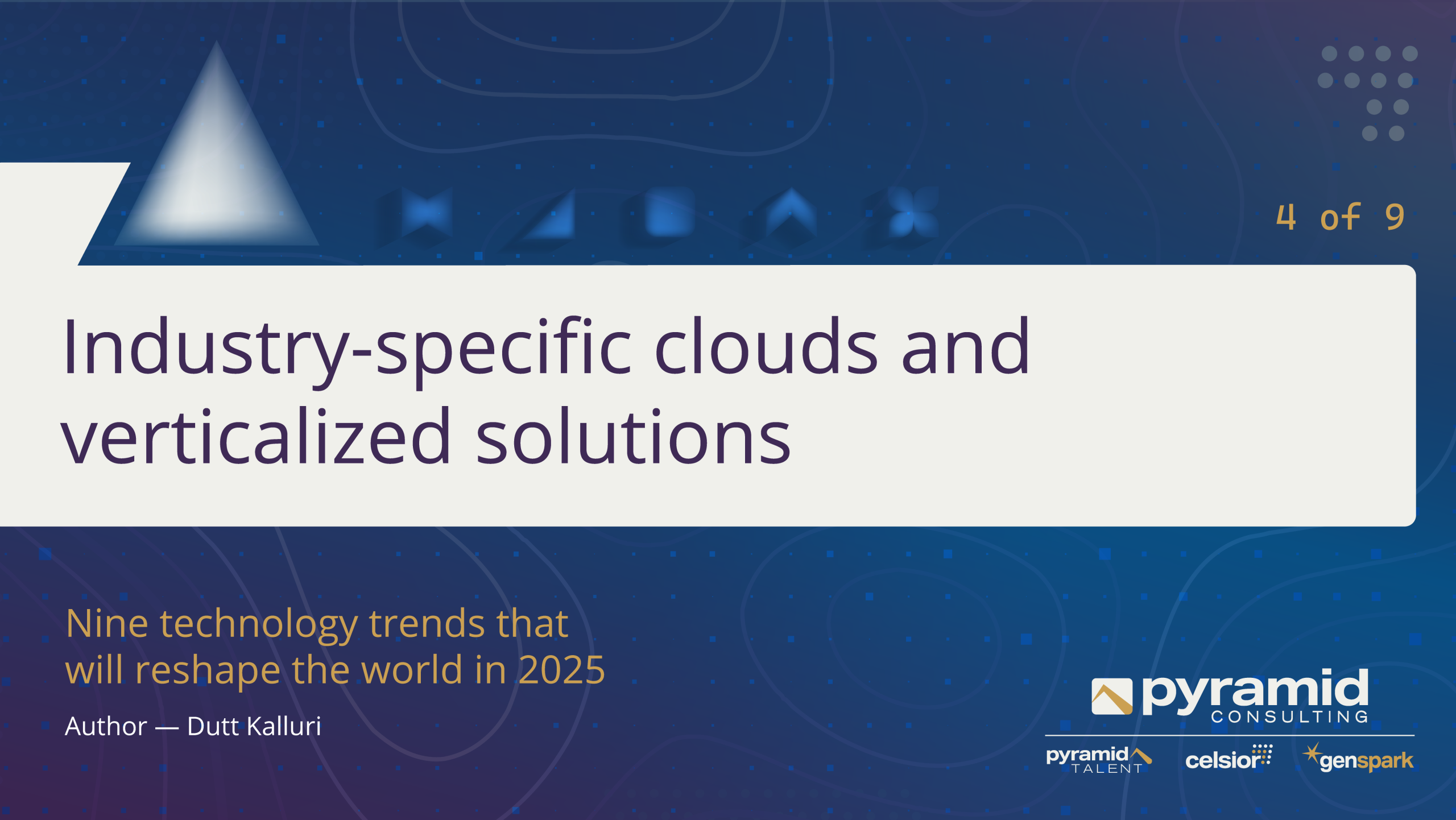
Global businesses are facing an increasing need to adapt quickly to market dynamics. Thus, we are witnessing the emergence of tailored cloud solutions designed to meet the unique demands of specific industries.
Gartner projects that spending on cloud services will grow from $595.7 billion in 2024 to a staggering $723.4 billion in 2025. As cloud adoption increases, organizations are also realizing that cloud solutions with generic capabilities do not always fit their unique needs, leading to higher costs and lower returns especially if their applications are not cloud native, or simply put, not cloud ready.
A good friend of mine recently suggested that traditional cloud computing, or hyperscalers as we know them, is on the decline, and I agree. Organizations are now moving beyond one-size-fits-all cloud platforms to tailored cloud solutions, known as industry-specific clouds and verticalized solutions.
In 2025, the very definition and viability of the cloud will continue to evolve, transforming how businesses leverage technology. However, this shift goes beyond technical advancements — it signals a fundamental rethinking of cloud’s role as a core driver of business strategy.
As technology advances and AI becomes mainstream, user expectations are evolving beyond data collection and analysis. Businesses must now deliver engaging, interactive, and highly personalized experiences while adapting to rapid market shifts and complex regulatory landscapes. This shift marks the start of what I call, the Experiential Age — where cloud platforms are no longer just data storage and processing tools, but intelligent ecosystems that understand, predict, and adapt to industry needs in real-time.
As industries evolve, cloud computing is becoming the foundational infrastructure for more specialized applications.
In healthcare, industry-specific clouds now provide HIPAA-compliant data management, AI-powered diagnostic tools, and secure telehealth platforms. These solutions let healthcare providers prioritize patient care over IT concerns. Similarly, industry-specific clouds in banking offer pre-integrated solutions for fraud detection, compliance with financial regulations, and personalized customer experiences.
These verticalized solutions enable organizations to hit the ground running with purpose-built, high-impact tools, empowering them to innovate faster, ensure smarter compliance, and compete more effectively.
The rise of industry-specific clouds is largely driven by pressing business needs and evolving market demands. Let us look at the key drivers.
As these tailored cloud solutions continue to evolve, they will drive the next phase of industry transformation. However, to fully capitalize on this shift, organizations must rethink their business processes, prioritize long-term flexibility and scalability, and mitigate risks like vendor lock-in to ensure seamless interoperability in the cloud-driven future.
Those that strategically embrace industry-specific clouds won’t just enhance operational efficiency — they will secure a competitive advantage in the Experiential Age, where intelligent ecosystems anticipate, adapt, and respond to industry needs in real-time, shaping the future of business strategy.
Read more about other 2025 technology trends here.
Examining how agent managers operate in business
Learn More
Smarter claims for peak season
Learn More
Agile adoption in a changing landscape
Learn More